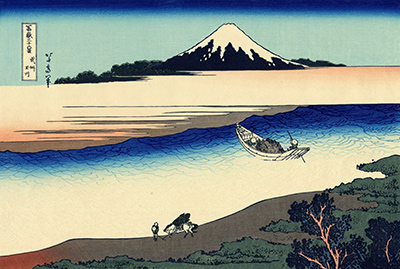Famous Japanese artwork often reflects the country's rich cultural heritage. Engraved in its history, the artistic techniques used have continued to gain global recognition. The Hokusai's woodblock prints is an example of this approach. Among these is The Tama River in Musashi Province, which depicts unique arts of the past.
Like its affiliate, the Hokusahi's Fugaku sanjurokkei or Thirty-six views of Mount Fuji this masterpiece stands out. These are art collections on Japanese landscapes highlighting the famous Mount Fuji in its natural beauty.
Produced between 1830 and 1832, the prints bring out a rich cultural blend of religion and tradition. The origin of the Japanese woodblock printing was popular in the creation of book prints. It explains the history of the Tama River as one of the main rivers in the region. It also highlights outstanding Japanese artwork, which talked about the natural environment, the Fuji Mountain and the popular province. The Tama River in Musashi Province inspired several sketches of the scenery with the sunset, snowfall, bridges and the temple.
Images of the print reveal the beauty of Japanese landscapes made of rivers, snowcapped mountains, and scenic views as they were back then. Its image has been a source of poetic descriptions of the changing environment influenced by different factors. The admirable beauty of nature in its undefiled state brings out the abundance of natural resources in a classic piece of art. Later prints revolving around the same feature showed the people’s way of life including the development of Musashi Province and human developments.
Often classified among print classics, this technique borrows from different styles including Chinese arts. Made in woodblock color print, the 26.2cm x 37.5cm Asian art piece is a collection of unique creativity with global recognition. Its use of single sheets made it compatible with the Asian water based inks whose colors varied. This made transparent prints like Buddhist texts more vivid.




